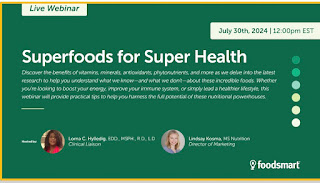7 Nutritional Consequences of Alcohol Abuse
Alcohol as an Antagonist:
Our energy producing macronutrients- Carbohydrates, Protein and Fats provide 4 Kcal/gram, 4 Kcal/gram and 9 Kcal/gram respectively. Alcohol provides nearly as much calories per gram as fat and comes in at 7 Kcal/gram.
Persons abusing alcohol often consume alcohol to the detriment of solid food intake. By so doing, diet quality becomes poor, and many essential nutrients become limited thereby affecting bodily functions of maintenance of structures and repair.
Alcohol is also directly implicated in interference of the processes of digestion, and utilization of nutrients.
Seven Nutritional Consequences:
1. Effect on digestion and nutrient utilization:
Alcohol damages cells that line the stomach and intestine and this in turn affects both nutrient absorption and the ability of some nutrients to be transported into the blood.
Folate deficiency is associated with abuse of alcohol, and this as well affects the cells lining the small intestine thereby reducing the absorption of water and other nutrients.
Abuse of alcohol also has an impact on nutrient transport, storage and excretion thereby altering their potential to be adequately utilized.
2. Inadequate Consumption of Nutrient Dense Foods & Poor Glucose Regulation:
Alcohol abusers may consume as much as 50 % of their daily caloric intake from alcohol. This is to the detriment of nutrient dense foods and essential nutrients.
In addition, alcohol can adversely affect the mechanisms by which blood glucose levels are controlled resulting in hyper or hypo-glycemia.
3. Impaired Cell Structure:
Research findings have suggested that alcohol affects protein metabolism adversely by first impairing protein digestion and also via the impairment of protein processing by the small intestine and liver, impaired protein synthesis as well as secretion by the liver. Cell structures are impaired as a result of inadequate protein intake as well as the above processes that are affected.
4. Impaired Body Function:
Compromised nutrient absorption and metabolism as a consequence of alcohol abuse can lead to inadequate overall body function.
5. Vitamin Deficiencies and Manifestations:
Vitamins are essential in the regulation of many of our physiological processes. However, vitamin deficiencies have been observed in association with heavy drinking due to the exclusion of some foods, as well as compromised absorption and utilization. Notably, the fat-soluble vitamins A, D, E, and K are affected due to the inhibition of fat absorption by alcohol.
B vitamins such as thiamin and folate are also affected by alcohol abuse. Not only are B vitamins required for the enzymatic reactions involved in the breakdown of alcohol by the liver, but also like vitamin C, these vitamins are water soluble and are easily lost in the increased urine production as a result of the diuretic effect of alcohol.
6. Mineral Deficiencies:
Mineral deficiencies are common in alcohol abusers and appear to occur secondary to other alcohol related malfunctions. Deficiencies of calcium, magnesium, iron and zinc for instance occur as a result of fat malabsorption, decreased intake, increased urinary excretion along with vomiting and diarrhea, gastrointestinal bleeding, and losses in conjunction with other nutrient deficiencies respectively.
7. Medical Consequences:
- In Pregnancy:
- On Brain:
Nutritional deficiencies and notably thiamin (B1) deficiency have been known to cause severe neurological effects and adverse effects on brain function. Wernicke/Korsakoff syndrome is one notable neurological condition characterized by impairment in movement and memory loss.
- Liver Disease and Pancreatitis:
Abuse of Alcohol directly contributes to liver damage. However, the poor dietary intake that is associated with alcohol abuse also increases this risk.
Research findings suggest that the associated malnutrition that accompanies alcohol abuse may increase the risk of developing alcoholic pancreatitis. Research findings also suggest that a diet that is deficient in protein may contribute to the damaging effect of alcohol on the pancreas.
https://www.ncbi.nlm.nih.gov
niaaa.nih.gov
Lorna C Hylledig Ed.D, MSPH, R.D, L.D













Unbelievable how many calories per gram are in alcohol & it provides no nutritional value
ReplyDeleteYes, the major problem is that it provides “empty calories” in addition to the numerous adverse health effects that were discussed.
DeleteThis is such an important topic as alcohol abuse can truly wreak havoc on the body! Drink responsibly friends!
ReplyDeleteAmazing!
ReplyDeleteFat & unhealthy!
ReplyDeleteAlcohol does have almost the same caloric contribution per gram as fat. It is important for people to note that along with the adverse effects of overconsumption.
Delete